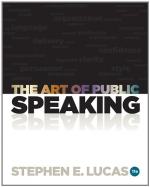23. Describe an event in your favorite sport in the style of Dr. Talmage. Be careful to make the delivery effective.
24. Criticise, favorably or unfavorably, the descriptions of any travel talk you may have heard recently.
25. Deliver a brief original travel talk, as though you were showing pictures.
26. Recast the talk and deliver it “without pictures.”
FOOTNOTES:
[Footnote 19: Writing the Short-Story, J. Berg Esenwein.]
[Footnote 20: For fuller treatment of Description see Genung’s Working Principles of Rhetoric, Albright’s Descriptive Writing, Bates’ Talks on Writing English, first and second series, and any advanced rhetoric.]
[Footnote 21: See also The Art of Versification, J. Berg Esenwein and Mary Eleanor Roberts, pp. 28-35; and Writing the Short-Story, J. Berg Esenwein, pp. 152-162; 231-240.]
[Footnote 22: In the Military College of Modena.]
[Footnote 23: This figure of speech is known as “Vision.”]
CHAPTER XXI
INFLUENCING BY NARRATION
The art of narration is the art of writing in hooks and eyes. The principle consists in making the appropriate thought follow the appropriate thought, the proper fact the proper fact; in first preparing the mind for what is to come, and then letting it come.
—WALTER BAGEHOT, Literary Studies.
Our very speech is curiously historical. Most men, you may observe, speak only to narrate; not in imparting what they have thought, which indeed were often a very small matter, but in exhibiting what they have undergone or seen, which is a quite unlimited one, do talkers dilate. Cut us off from Narrative, how would the stream of conversation, even among the wisest, languish into detached handfuls, and among the foolish utterly evaporate! Thus, as we do nothing but enact History, we say little but recite it.
—THOMAS CARLYLE, On History.
Only a small segment of the great field of narration offers its resources to the public speaker, and that includes the anecdote, biographical facts, and the narration of events in general.
Narration—more easily defined than mastered—is the recital of an incident, or a group of facts and occurrences, in such a manner as to produce a desired effect.
The laws of narration are few, but its successful practise involves more of art than would at first appear—so much, indeed, that we cannot even touch upon its technique here, but must content ourselves with an examination of a few examples of narration as used in public speech.




